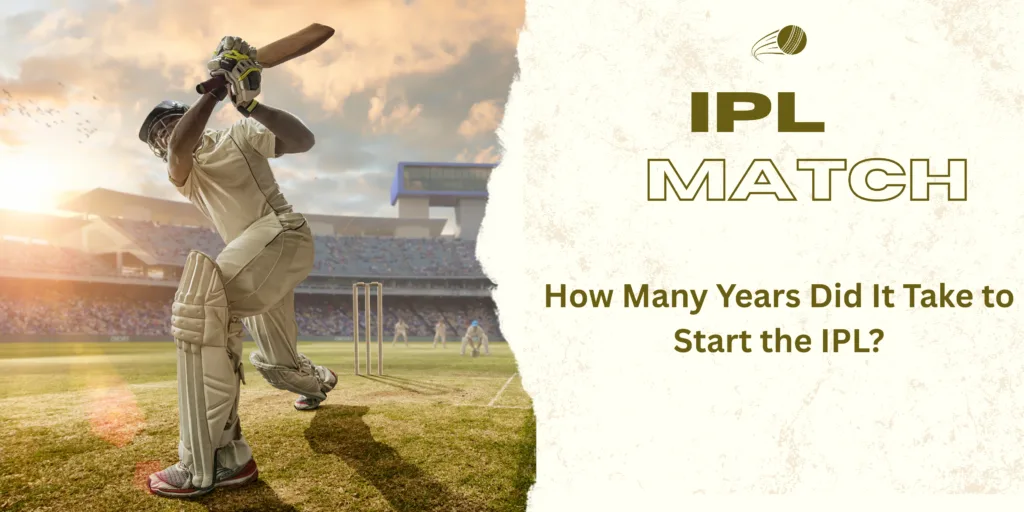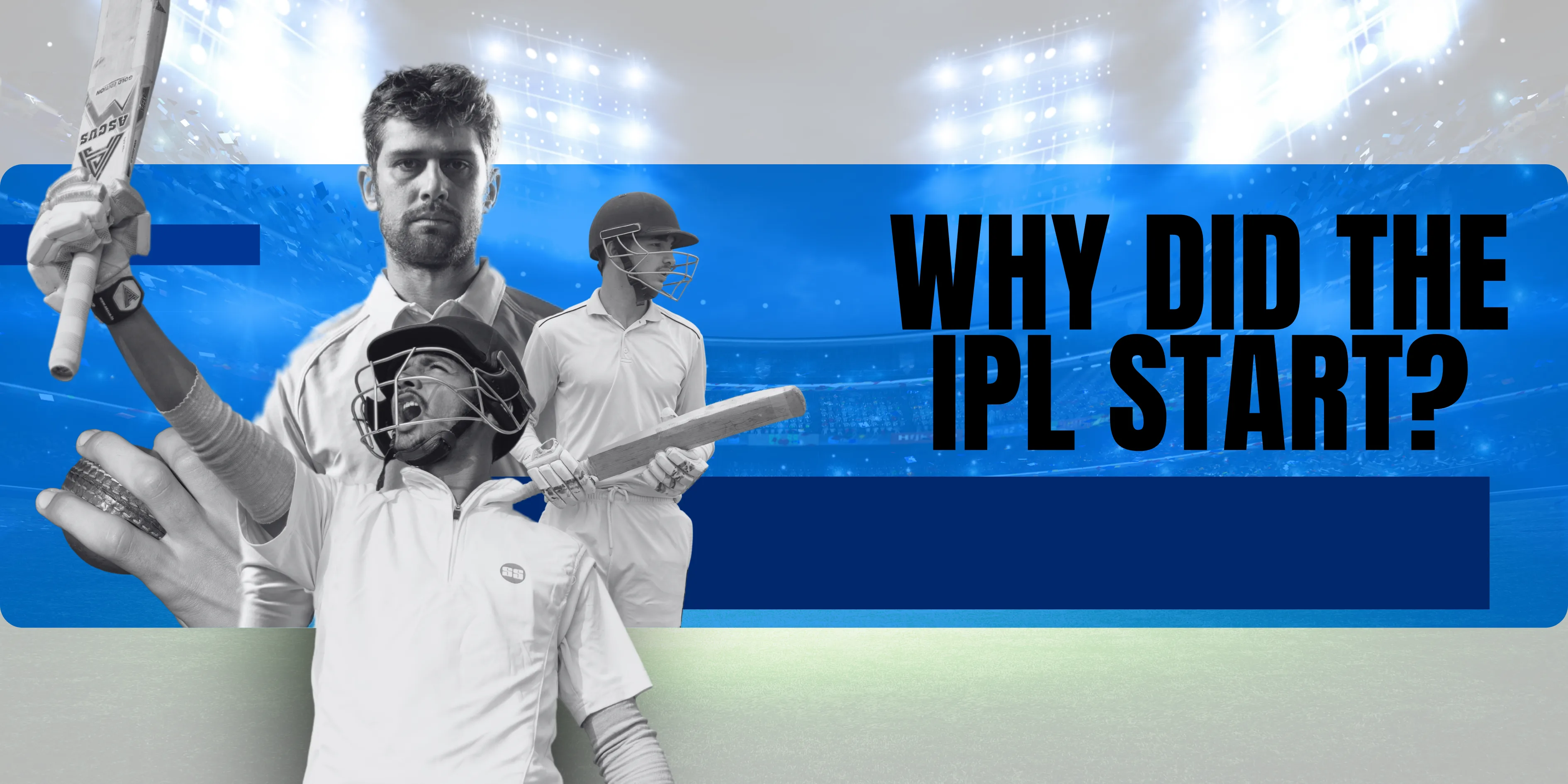Why the IPL Start?
Discover Why the ipl start? The Indian Premier League (IPL), inaugurated in 2008, has become one of the most successful and profitable cricket leagues in the world. But why did it start? The answer lies in the changing dynamics of global cricket, the increasing demand for shorter formats of the game, and the need for commercialization and financial growth within Indian cricket. Let’s dive deeper into the reasons behind the birth of the IPL.
WOULD YOU LIKE TO PLAY CRICKET?
1.What led to the launch of the IPL?
The launch of the IPL was driven by the growing popularity of T20 cricket, commercial opportunities, and the success of India’s 2007 World Cup win. It aimed to revolutionize cricket by blending sports, entertainment, and global fan engagement.
2. The Growth of T20 Cricket
In the early 2000s, the landscape of cricket was dominated by longer formats, particularly Test matches and One-Day Internationals (ODIs). However, the introduction of the T20 format (with 20 overs per side) started changing the game dramatically. The first T20 World Cup in 2007, hosted by South Africa, marked a pivotal moment in cricket. India’s victory in this tournament sparked a nationwide frenzy around T20 cricket.
3. Commercialization of Indian Cricket
Before the IPL, Indian cricket was largely structured around domestic tournaments such as the Ranji Trophy, Duleep Trophy, and Irani Cup, which were vital but lacked the commercial appeal that could bring in large-scale revenue
. By adopting a franchise-based model, similar to successful leagues in other sports such as the English Premier League (EPL) for football and the NBA in basketball, the IPL allowed corporate sponsors to invest in teams. This commercialization of the sport created new revenue streams from television rights, ticket sales, merchandise, and sponsorships, ensuring the financial sustainability of the league while also benefiting the entire cricket ecosystem.
4. Providing a Platform for Indian Talent
Another significant reason for the creation of the IPL was to provide a platform for emerging Indian cricketers. At the time, Indian domestic cricket lacked visibility on a global scale, and players often struggled to showcase their talents outside of the domestic tournaments. To fully understand this initiative, one must consider — why the IPL start? It was designed to elevate domestic talent by placing them on an international stage alongside top global players.
The IPL, with its glitzy and high-profile matches, brought together some of the world’s best cricketers. This gave young, aspiring players the chance to compete with and learn from international legends like Shane Warne, Ricky Ponting, and Adam Gilchrist
5.Entertainment and Glamour
The IPL was designed to be much more than just a cricket tournament—it was to be a blend of sports and entertainment. To make it more attractive to younger audiences and casual viewers, the IPL incorporated elements of Bollywood, cheerleaders, and music concerts alongside the matches.</p>
The involvement of Bollywood stars, who became team owners or played roles in promotions, helped to further enhance the glamour factor. Opening ceremonies, vibrant celebrations, and stylish team uniforms were all part of the IPL’s vision to be an exciting spectacle.
6. Financial Growth and Globalization of Cricket
The IPL was not just a breakthrough for Indian cricket but for cricket globally. The league has evolved into one of the most lucrative sporting tournaments in the world. The franchises became attractive investment opportunities, with team owners ranging from Bollywood actors to business tycoons.
The rise of media rights in the IPL also played a pivotal role in its success. The sale of broadcasting rights for the tournament generated enormous revenue. The presence of international cricketers and the global media exposure further enhanced the IPL’s stature as an international sports property.
To understand this impact, it’s important to ask — why the IPL start?

How Many Years Did It Take to Start the IPL?
The story of how the IPL came into existence is as fast-paced as the T20 games it features. It took just one year for the idea of the IPL to transform into reality, with the first season kicking off in April 2008. Here’s a timeline of the key events that led to the IPL’s birth:
What the IPL Start?
The IPL began in 2008, driven by the BCCI’s vision to commercialize cricket and popularize the T20 format. It aimed to showcase emerging talent, compete with rival leagues, and attract global audiences. Inspired by international sports leagues, the IPL blended cricket with entertainment, transforming the sport’s appeal worldwide.
1. The Spark – ICC T20 World Cup 2007
The seed for the IPL was planted during the 2007 ICC T20 World Cup in South Africa. India’s victory in this inaugural tournament ignited a new wave of enthusiasm for T20 cricket.
The T20 World Cup’s success showed that there was a demand for a fast, exciting format that could appeal to both traditional cricket fans and a new generation of viewers. The BCCI, led by Lalit Modi, recognized the opportunity and moved forward with the idea of creating a domestic T20 league that could capture the same energy.
2. What prompted the IPL’s origin?
The IPL originated after India’s 2007 T20 World Cup victory, prompting the BCCI to capitalize on cricket’s entertainment value. It was designed to attract global audiences, generate revenue, and offer a platform for emerging talent through a franchise-based league system.
3. Late 2007 – Announcement of IPL
By late 2007, the Board of Control for Cricket in India (BCCI) officially announced the formation of the Indian Premier League (IPL). Lalit Modi, then Vice President of the BCCI, was the driving force behind the league’s creation. His vision was to establish a professional, high-quality league that would attract both top international cricketers and large corporate sponsors.
4. January 2008 – First IPL Auction
In January 2008, the BCCI held the first-ever IPL auction. Teams were formed, and business magnates, celebrities, and companies purchased franchises to represent various cities in India. The auction generated significant buzz, and the high prices of players demonstrated the financial potential of the league.
5. April 2008 – IPL’s Inaugural Season
. The tournament featured eight teams, and the opening match was a thrilling encounter between Kolkata Knight Riders and Royal Challengers Bangalore. The IPL’s first season was an overwhelming success, both in terms of viewership and revenue.
The Rajasthan Royals, led by captain Shane Warne, became the first champions of the IPL, defeating the Chennai Super Kings in the final.
Conclusion
The IPL’s journey from concept to execution took just one year, a rapid development fueled by the passion for T20 cricket, the drive for commercialization, and the desire to revolutionize Indian cricket. Since its inception in 2008, the IPL has grown into a global powerhouse, blending sport with entertainment.





 No products in the cart.
No products in the cart.